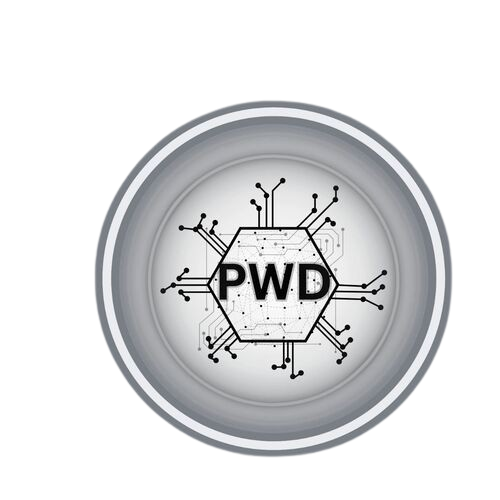
What Is a Digital Marketing Strategy?
A digital marketing strategy is a plan to reach your target audience online. It includes the platforms you’ll use (like Instagram, email, or Google), the content you’ll create, and how you’ll turn followers into customers.
Think of it like a roadmap. Without it, you’re just posting randomly and hoping something works. With a strategy, you know where you’re going—and how to get there.
🎯 Step 1: Define Your Goals
Before you post a single thing, ask yourself:
What do I want to achieve with digital marketing?
Some common goals include:
- Get more website visitors
- Build brand awareness
- Increase product sales
- Grow an email list
- Get more bookings or inquiries
👉 Pro tip: Use the SMART goal method (Specific, Measurable, Achievable, Relevant, Time-based).
Example: “Get 1,000 website visitors per month in 3 months.
👥 Step 2: Understand Your Audience
If you try to speak to everyone, you end up connecting with no one.
Ask:
- Who are my ideal customers?
- What problems do they have?
- Where do they spend time online?
- What kind of content do they like?
For example:
If you sell skincare for women over 40, your tone, platform, and messaging will be different than if you’re targeting college students.
📌 Create a simple buyer persona:
- Name: Susan
- Age: 45
- Problem: Dry, aging skin
- Follows: Instagram, YouTube skincare videos
- Needs: Honest reviews, before-after photos
You can build your persona with tools like this one: link
Step 3: Choose the Right Channels
You don’t need to be everywhere. You just need to be where your audience is.
Some common channels:
- Instagram: great for lifestyle, beauty, fashion
- Facebook: strong for local businesses, communities
- TikTok: perfect for viral, fast-paced, fun content
- Google Ads / SEO: good for people searching with intent
- Email Marketing: great for nurturing leads and repeat sales
Start with 1–2 platforms you can manage well. Focus brings better results than trying to do everything at once.
Step 4: Plan Your Content
Now that you know where you’ll post, decide what you’ll post.
Types of content:
- Educational: how-to guides, tips, checklists
- Inspirational: success stories, quotes
- Entertaining: fun facts, behind-the-scenes
- Promotional: product offers, limited-time deals
Example: A bakery could post:
- Recipe tips (educational)
- Photos of happy customers (inspirational)
- Time-lapse of cake-making (entertaining)
- Weekend discount promo (promotional)
Use a content calendar to stay consistent. Even posting 3 times a week is enough if it’s high quality.
Use this free content calendar template: link
Step 5: Attract Visitors with SEO & Social Media

You need traffic—people visiting your website, profile, or store.
A) SEO (Search Engine Optimization)
SEO means making your content easier to find on Google.
Quick tips:
- Use keywords your audience searches (like “best home workouts”)
- Write helpful blog posts or pages
- Make sure your site loads fast and works on mobile
Example: Write a blog post called “Top 5 Skincare Tips for Women Over 40.”
That’s a keyword-rich title with real value.
B) Social Media
- Post regularly (2–4 times/week)
- Use hashtags
- Engage with your followers (reply to comments, DMs)
- Use trending audio or formats for more reach (on Reels/TikTok)
Step 6: Build and Grow Your Email List
Social media is great, but you don’t own your followers. Email gives you direct access to your audience—no algorithm in the way.
Ways to grow your list:
- Offer a freebie (ebook, discount, checklist)
- Add popups on your website
- Promote sign-up links in your social bios
Use tools like:
- Mailchimp
- ConvertKit
- ActiveCampaign
Send emails that help, not just sell. Tips, news, and offers work best.
For email writing tips: link
Step 7: Track Your Results
If you don’t track your progress, you can’t improve it.
Look at metrics like:
- Website traffic (via Google Analytics)
- Follower growth
- Engagement (likes, comments, shares)
- Email open rates
- Sales and conversions
Ask:
- What’s working?
- What isn’t?
- What can I improve next month?
Make small changes based on data. That’s how real growth happens over time.
Real-Life Example
Sarah, a 30-year-old artist, wanted to sell her paintings online. She had no website, no followers, and no idea where to begin.
She started with:
- Posting 3 times/week on Instagram
- Writing 1 blog post per month with keywords
- Growing her email list with a free “mini print” offer
In 6 months, she had:
- 4,000 Instagram followers
- 2,000 email subscribers
- Sold over $10,000 worth of art
All from a simple, clear strategy and staying consistent.
Final Thoughts
Starting your digital marketing journey might feel scary at first. But it doesn’t need to be perfect. You just need to start.
Remember:
- Set clear goals
- Know your audience
- Focus on a few channels
- Share valuable content
- Track and tweak your approach
With patience and passion, your digital strategy can take your brand from zero to real success.
